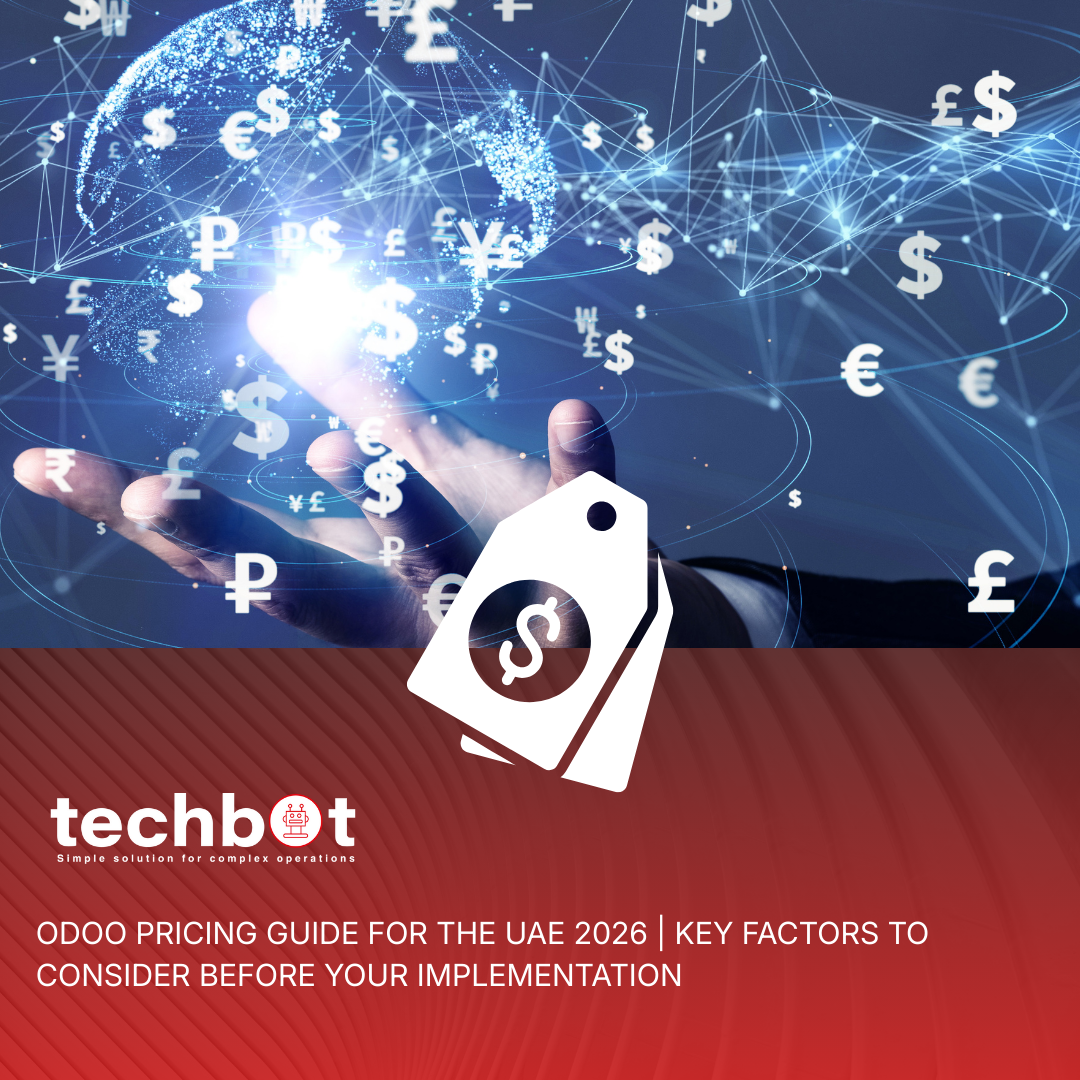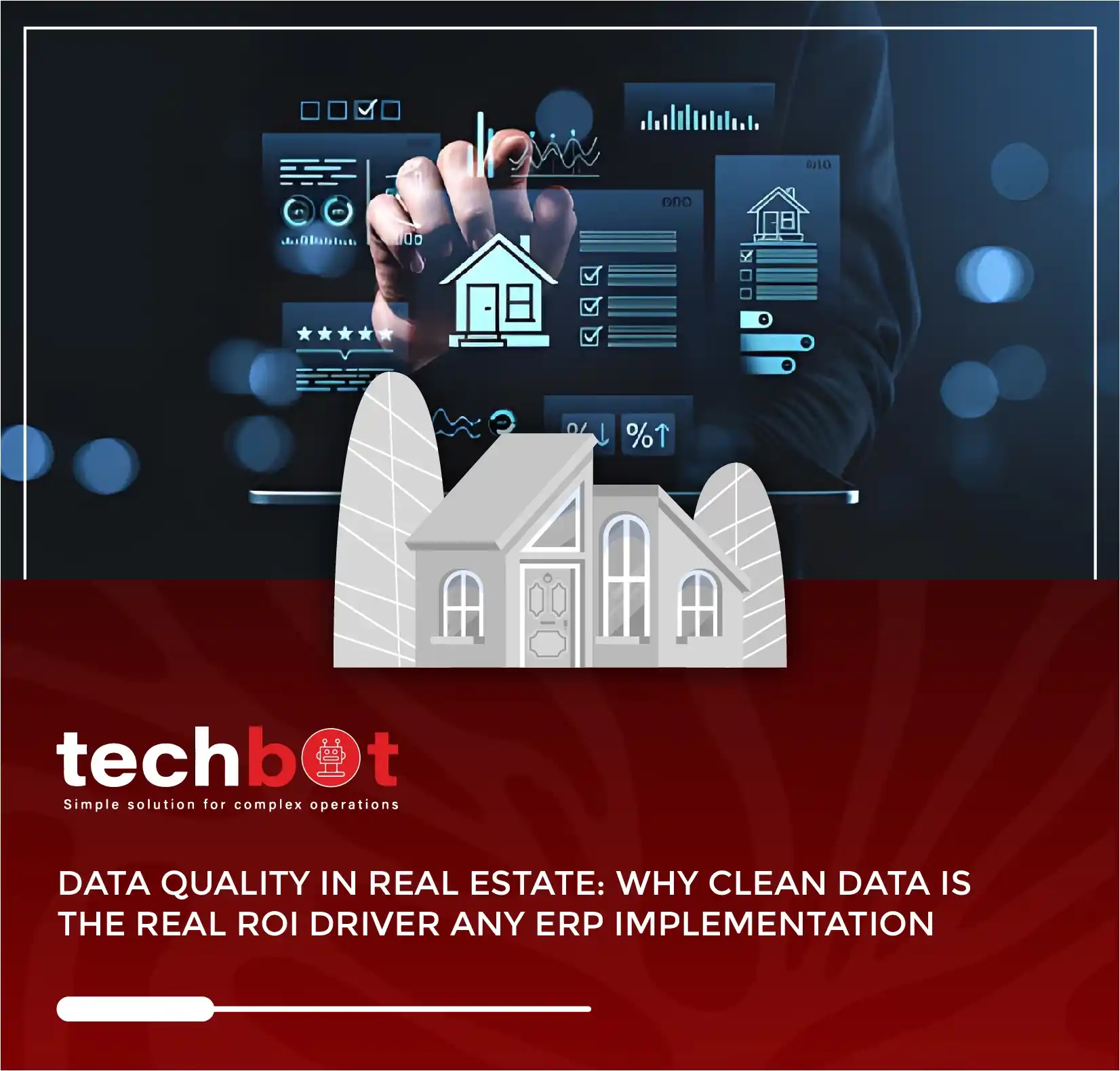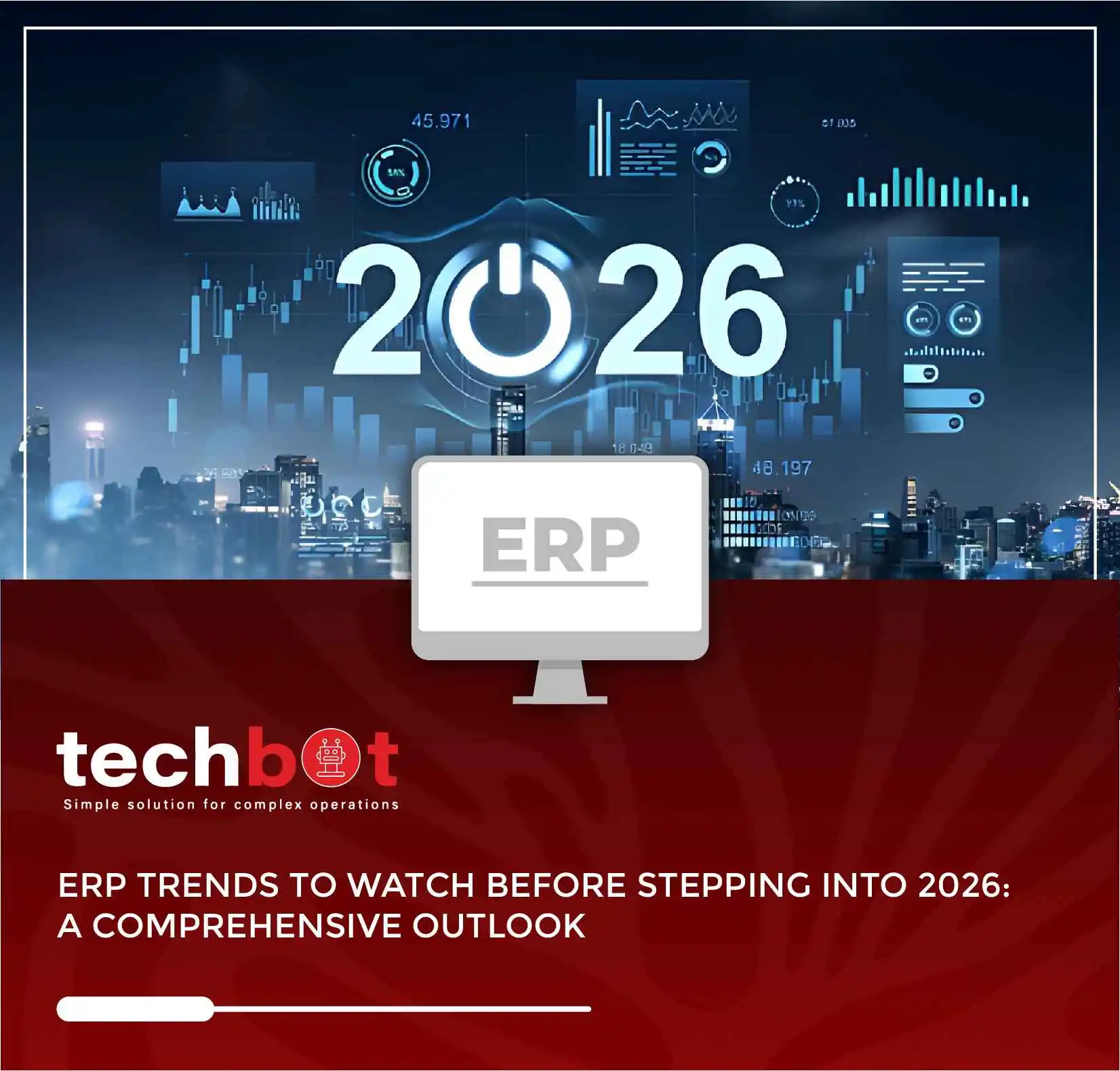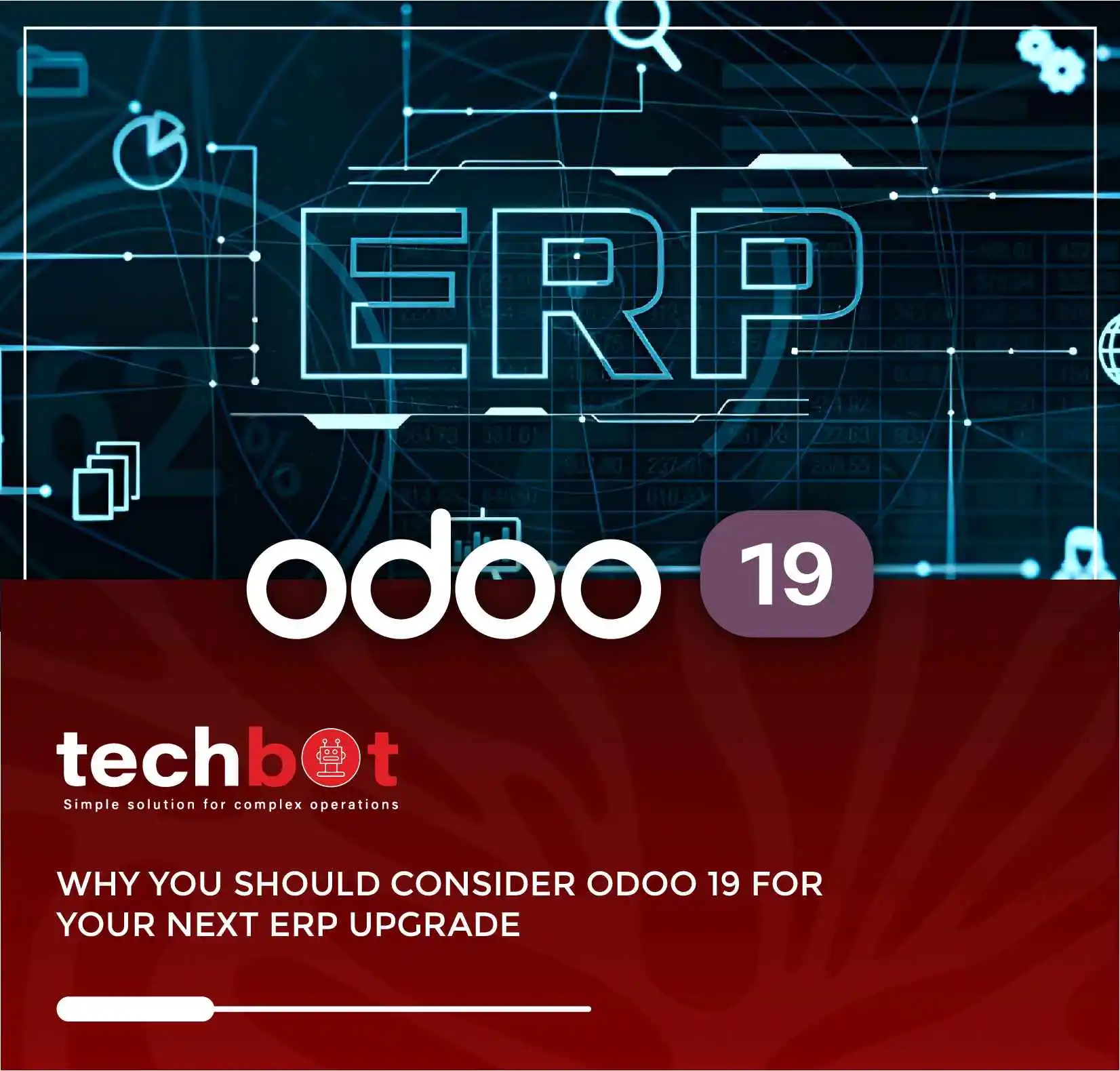10 Must-Know Tips For A Successful Odoo ERP Implementation
Moossa M. Alavi
Moossa M. Alavi is the Founder & CEO of Techbot ERP and Altamyz Advertising. He is a certified Odoo consultant with more than 27 years of experience in business, advertising, and ERP software. Moossa started his career in the UAE in 1997 with a well-known group in Abu Dhabi. Over the years, he built his own companies to help other businesses work better using technology. Moossa helps with customized ERP implementation for various industries, including manufacturing, insurance, supercar rental, and logistics, through Techbot ERP. He resolves these issues with Odoo ERP and supports businesses in growing with the right assets and guidance. Moossa has received many awards for his work, including the Arabian Best of Best Award and the Industry Leader Award from BNI UAE. He is also a BNI Ambassador and mentors other business owners. He believes in giving back to the community and helping others grow, following the “Givers Gain” principle.
Share this post
Latest Post
Recent Posts
- Odoo Pricing Guide for the UAE 2026 | Key Factors to Consider Before Your Implementation
- Why Clean Data Drives The Highest ROI In Real Estate ERP Projects
- ERP Trends To Watch Before Stepping Into 2026: A Comprehensive Outlook
- Importance Of ERP For Growth And Compliance In Real Estate
- Why You Should Consider Odoo 19 For Your Next ERP Upgrade
- Odoo 19 Migration For Real Estate: Benefits, Risks & Migration Checklist
- How AI Agents In Odoo 19 Are Revolutionizing Business Support
- Top 7 Odoo 19 AI Features Transforming Business Workflows
- How to Use Odoo 19 to Automate Real Estate Sales And Finance
- Odoo 18 vs Odoo 19: A Complete Feature Comparison To Guide Your Next Upgrade

At Techbot, we are your trusted Odoo partner, providing expert consultation, implementation, Odoo ERP training, and ongoing support. In this blog, we will share the top 10 tips to ensure that your Odoo ERP implementation is done correctly the first time, helping your business reach its full potential. Our practical advice will make your move to Odoo as easy and efficient as possible.
What is Odoo ERP and How can it benefit your business?
At Techbot, we are your trusted Odoo partner, providing expert consultation, implementation, Odoo ERP training, and ongoing support. In this blog, we will share the top 10 tips to ensure that your Odoo ERP implementation is done correctly the first time, helping your business reach its full potential. Our practical advice will make your move to Odoo as easy and efficient as possible.
- Scalability: Adapt the system as your business expands, allowing it to grow with you.
- Customization: Tailor the software to meet specific needs without complex coding, ensuring it fits perfectly with your operations.
- Efficiency: Automate and streamline workflows, saving time, reducing errors, and making your business more productive.
- Real-time data: Access accurate and updated information at any time to make informed business decisions.
Choosing Odoo ERP ensures that your business has a flexible and cost-effective solution for managing every part of your operations. However, for Odoo ERP implementation to be successful, the process needs careful planning and execution. With the right partner like Techbot, your Odoo ERP implementation will set the stage for success
Get expert ERP guidance for your business. Optimize your operations with the right ERP solution.


10 Essential tips for a smooth Odoo ERP implementation
Implementing Odoo ERP successfully requires a strategic approach. Below are 10 essential tips that will guide you through the Odoo implementation process and help ensure a smooth transition. Techbot is here to support you every step of the way — from consultation to Odoo ERP implementation & training, and beyond. With our expertise and guidance, your Odoo ERP journey will be optimized for efficiency and long-term success.
1. Define clear business needs for Odoo setup
Before starting any ERP implementation, it’s crucial to clearly define your business needs. By understanding what processes you want to automate or improve, you can customize your Odoo ERP setup to meet your specific goals. It’s important to ensure that every department’s requirements are considered, so the final solution is aligned with your overall business strategy. At Techbot, we work with you to understand your pain points and objectives, ensuring that the Odoo ERP implementation aligns with your business needs from the get-go.
2. Involve all key people in the process
The success of your Odoo ERP implementation depends on the involvement of key stakeholders. This includes department heads, decision-makers, and end-users who will be interacting with the system. Engaging these individuals early on ensures that the system meets their requirements and is adopted successfully. Early involvement also fosters a sense of ownership and commitment to the project. At Techbot, we make sure that all necessary parties are involved throughout the Odoo implementation process, ensuring complete alignment and smooth adoption.
3. Pick the right Odoo modules for your business
Odoo ERP offers a wide range of modules that cover everything from sales to finance to human resources. However, it’s important to pick the modules that align with your specific business needs. Picking the wrong modules or overloading the system with unnecessary features can result in inefficiencies and increased complexity. Techbot will guide you through selecting the best modules, ensuring that your system is smooth, efficient, and cost-effective. Together, we will make sure that your Odoo ERP setup maximizes productivity while staying focused on your core business functions.
4. Start data migration early for a smooth transition
One of the most critical aspects of the Odoo ERP implementation process is data migration. Begin migrating your data early to ensure a smooth transition to your new system. Clean, accurate data is essential for the system to function properly. It’s essential to prioritize data accuracy to avoid issues that could arise later. Techbot’s expert consultants will help you ensure that your data migration is seamless, minimizing disruptions to daily operations and enabling a smooth switch to your new Odoo ERP solution.
5. Test the system well before going live
Testing is a vital part of the Odoo ERP implementation & training process. Ensure thorough testing of your system before it goes live. This includes functionality testing, integration testing, and user acceptance testing (UAT). Without proper testing, you risk missing issues that could negatively impact system performance. Techbot will work with you to test every aspect of the system and make adjustments as needed to ensure everything is working perfectly before launch. By thoroughly testing the system, you ensure that your business operations will run smoothly from day one.
6. Train users for effective Odoo usage
Training your team is crucial for successful Odoo ERP implementation. If users are not well-trained, the system’s full potential will not be realized. It’s important that employees not only know how to use the software but also understand how it integrates with business workflows. At Techbot, we provide comprehensive Odoo ERP implementation & training to ensure your team is fully prepared to make the most of the software. Our hands-on training approach ensures higher user adoption and greater ROI on your Odoo ERP investment.
7. Work with skilled Odoo consultants or partners
Partnering with an experienced Odoo ERP consultant or official Odoo partner is key to ensuring a successful implementation. Working with experts ensures that your system is configured correctly, challenges are addressed early, and you receive ongoing support. Techbot, as an official Odoo partner in the UAE, offers expert consultation, customization, and full support throughout the Odoo ERP implementation process. Our deep understanding of Odoo ERP ensures a seamless transition that maximizes your return on investment.
8. Customize Odoo only when absolutely necessary
While Odoo ERP offers a high degree of flexibility, customizing the system should be done only when absolutely necessary. Over-customization can increase complexity, complicate future updates, and add unnecessary costs. Techbot helps you assess whether a customization is truly necessary and ensures that any changes made enhance the system without creating unnecessary complications. Our goal is to keep your Odoo ERP implementation efficient and cost-effective, ensuring that your business gets the most value from the system.
9. Set realistic timelines and budgets for success
One of the most important aspects of a successful Odoo ERP implementation is setting realistic timelines and budgets. It’s easy to underestimate the time and costs involved in ERP implementation, but setting clear expectations from the start will help avoid surprises. Techbot works with you to define a realistic project plan, including timelines, milestones, and budgets, ensuring that the implementation stays on track and within budget. Clear planning and expectations are key to a successful deployment and ensuring smooth integration into your business.
10. Ensure ongoing support after go-live
The implementation process doesn’t end after the system goes live. Ongoing support is essential to ensure that your team is using the system effectively and that any issues are addressed quickly. As your Odoo ERP partner, Techbot provides continued support, maintenance, and system updates to ensure that your solution remains optimized and evolves with your business needs. We are here to assist you long after go-live, ensuring that your Odoo ERP system continues to drive business growth and efficiency.
Trust Techbot for your successful Odoo ERP implementation
Successful Odoo ERP implementation is more than just installing software — it’s about transforming your business operations to be more efficient, adaptable, and future-ready. By following the 10 tips outlined above, you can ensure that your Odoo ERP implementation is seamless and meets your business goals.
At Techbot, we are proud to be your official Odoo partner in the UAE. From ERP consultation to Odoo ERP implementation , we are here to guide you through every step of your digital transformation journey. Trust Techbot to make your Odoo ERP experience smooth, efficient, and successful.
Frequently Asked Question
1. Should I Do My Implementation Through Odoo?
It is highly recommended to work with an official Odoo partner, like Techbot, for your Odoo ERP implementation. We bring specialized knowledge, industry expertise, and support that ensures a smooth transition and optimal use of Odoo ERP. Choosing a trusted partner helps avoid common implementation pitfalls and ensures your business gets the most out of Odoo’s features.
2. What Should You Do Before You Start Using Odoo ERP?
Before starting your Odoo ERP implementation, it’s essential to assess your business needs, clean and prepare your data, and engage key stakeholders. You should also select the right modules for your business. At Techbot, we guide you through each step of this preparation to ensure your system aligns with your business goals
3. What Are Common Odoo Implementation Challenges?
Common challenges include data migration issues, lack of user adoption, misalignment of system features with business needs, and integration difficulties. With the right planning, training, and support from a trusted Odoo partner like Techbot, these challenges can be mitigated. Techbot’s experts provide comprehensive solutions to overcome these hurdles, ensuring a successful Odoo ERP implementation.
4. How Long Does Odoo ERP Implementation Take?
The timeline for Odoo ERP implementation depends on the complexity of your business and the number of modules involved. Typically, it can take anywhere from a few weeks to several months. Techbot works with you to develop a timeline that fits your business, ensuring a smooth and efficient implementation
5. Can Odoo ERP Be Customized?
Yes, Odoo ERP is highly customizable. However, it’s important to only make necessary customizations to avoid complicating the system. Techbot will ensure that customizations are aligned with your business needs, helping you get the most out of your Odoo ERP solution without unnecessary complexity. We focus on making Odoo ERP work for you, not the other way around.

Get the latest tips and updates on ERP software solutions. Subscribe to our newsletter and stay ahead in business!
Latest Post
Recent Posts
- Odoo Pricing Guide for the UAE 2026 | Key Factors to Consider Before Your Implementation
- Why Clean Data Drives The Highest ROI In Real Estate ERP Projects
- ERP Trends To Watch Before Stepping Into 2026: A Comprehensive Outlook
- Importance Of ERP For Growth And Compliance In Real Estate
- Why You Should Consider Odoo 19 For Your Next ERP Upgrade
- Odoo 19 Migration For Real Estate: Benefits, Risks & Migration Checklist
- How AI Agents In Odoo 19 Are Revolutionizing Business Support
- Top 7 Odoo 19 AI Features Transforming Business Workflows
- How to Use Odoo 19 to Automate Real Estate Sales And Finance
- Odoo 18 vs Odoo 19: A Complete Feature Comparison To Guide Your Next Upgrade






